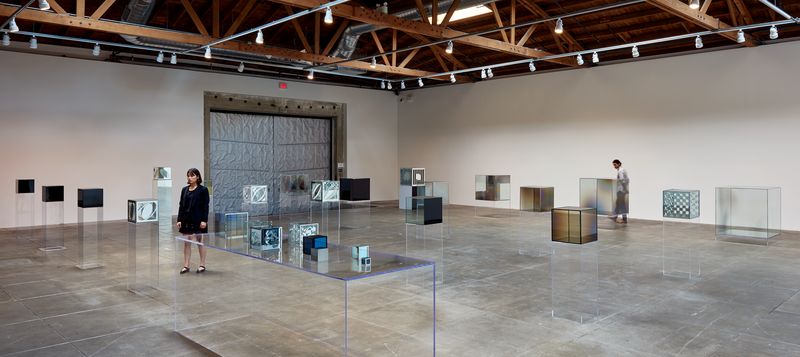Films
Complete Cubes: Inside Larry Bell’s Taos studio
Inside his Taos studio, Larry Bell reflects on his lifelong dedication to the glass cube. Working with this form since the 1960s, Bell’s innovative approach to sculpture and perceptual phenomena, and formal explorations into effects of light on glass use a wide variety of methods, materials, and surface treatments. ’Complete Cubes’, Hauser & Wirth’s first solo exhibition of works by the internationally acclaimed American artist in his hometown, is currently on view at Hauser & Wirth Los Angeles.
Born in Chicago in 1939, Larry Bell first moved to LA with his family in the 1940s. He attended the Chouinard Art Institute (known today as the California Institute of the Arts), from 1957 to 1959. After college he began working at a San Fernando Valley frame shop where he experienced a crucial artistic breakthrough: Bell would experiment with scraps of glass while at the shop, making small constructions with the material and other framing supplies. One day, he placed a cracked piece of glass in a shadow box. ‘The result was an intriguing dual effect,’ Bell recounts, ‘the cracked glass threw a shadow and also a reflection of the crack on the paper.’ This fortuitous moment launched Bell’s career as a sculptor; he moved away from paint and canvas and began to manipulate light and glass in a practice that has now spanned nearly six decades. Bell rose to prominence in the 1960s, a decade of experimentation during which he worked alongside Southern California Light & Space artists Robert Irwin and John McCracken. In 1965, he relocated to New York for a two-year interlude during which he met Donald Judd and Frank Stella, two life-long friends of significant mutual influence. In 1967, Bell moved back to Los Angeles where, spurred by the emergence of a consumer class and encouragement from like-minded artists, he continued to explore the optic possibilities of glass and its capacity to absorb, reflect, and transmit light.

Larry Bell Working at the Taos Studio, 1980. Photo: Walter Chappell

Larry Bell, Venice Studio, 2005
In January of 1966, living in New York, he purchased a vacuum coating chamber from Ben Koenig, a German decorative metalizer in the Bronx. Bell learned to operate this machine by reading an old manual called ‘Vacuum Deposition of Thin Films.’ Up to this point, he had relied on several companies across Southern California to coat the panes of glass he used in his sculptures, a time-consuming and expensive process. His new vacuum chamber allowed the artist to deposit films of different metallic and non-metallic substances onto the glass himself. This coating technique, known as ‘thin film deposition,’ was widely used in camera lenses and telescopes by the bourgeoning optics industry. The years following Bell’s acquisition of the vacuum coating chamber gave the artist greater freedom to experiment with the surface of glass. Engagement with this technology pushed the artist away from silkscreening, which he was using to apply patterns to his cubes. According to Bell, such shapes rested ‘on the volume, but they didn’t have anything to do with it; they were pictures of something.’ Bell has said that acquisition of the vacuum chamber allowed him to produce his best work between 1965 and 1968, including ‘Untitled’ (1965 – 1966, 15 inches) and ‘Untitled’ (1965, 18 inches), both on view in the exhibition at Hauser & Wirth Los Angeles.

Installation view, 'Larry Bell. Complete Cubes', Hauser & Wirth Los Angeles, 2018. © Larry Bell. Photo: Mario De Lopez
‘Complete Cubes’ also includes Bell’s earliest attempts at creating three-dimensional representations of the shapes he painted on canvas before he decisively moved away from that medium. In ‘L. Bell’s House, Part II’ (1962 – 1963, 25 inches), Bell used ¼ inch household mirrors, scraping both sides to create a double mirror effect, and painted the exterior surface using epoxy paint along the edges joined to a four-sided plywood frame. This cube was so heavy that Bell was unable to lift it. ‘Bette and the Giant Jewfish’ (1963, 16 inches), a cube with a checkerboard pattern silkscreened on four sides, is another experiment in size and surface. The title of this work references an announcement for Bell’s second show at the Ferus Gallery on La Cienega Boulevard. It was also the first sculpture for which Bell used a coating technique through which he applied aluminum directly onto glass.
‘Larry Bell. Complete Cubes’ is on view at Hauser & Wirth Los Angeles through 23 September 2018.
